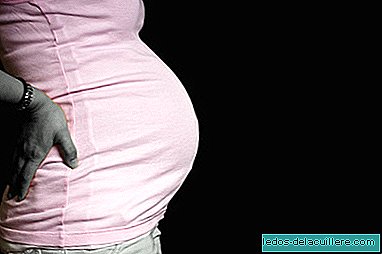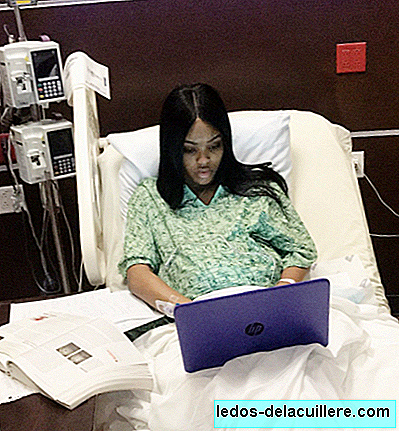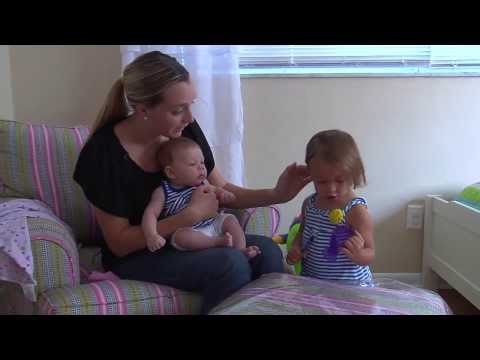To achieve a successful breastfeeding is essential what happens immediately after the birth of the baby. That is why the World Health Organization (WHO) and UNICEF have published the guide The 10 Steps for Breastfeeding.
WHO has been warning for decades about the multiple benefits of breastfeeding, but in this case it is necessary to emphasize the first hours of the newborn, so the document is aimed primarily at maternity and delivery professionals, although mothers they should also take good note for lay the foundations of breastfeeding well.
Breastfeeding saves lives
The guide comes to replace the recommendations addressed to babies full-term babies. The new recommendations also include premature babies, low-weight or sick babies, for whom breast milk is not only food, but an authentic medicine that exponentially improves their chances of survival.
However, in the world only 40% of babies are breastfed. As these agencies warn, "breastfeeding all babies from the zero minute until, at least, the two years would save more than 820,000 children under five years annually" and do so early, practically from the delivery room, protects them against infections and malnutrition.
AdvertisingAt the press conference presenting this decalogue, WHO expert Laurence Grummer-Strawn said:
"This initiative refers above all to the first days of life. It is about what happens in our maternity homes. It is a critical moment that must be protected to do everything possible for breastfeeding to start well and be successful."
For his part, the director of UNICEF Nutrition programs, Víctor Aguayo, emphasized a reality that is also what we live in Spain:
"Many women do not receive the necessary support to have a good start to breastfeeding and stop breastfeeding much sooner than they had planned."
10 steps to get off to a good start
We review the ten golden rules point by point to start breastfeeding successfully listed in the guide:
1. Fulfill each and every one of the requirements in relation to artificial formulas, which requires that they be taken, but not promoted.
In the guide it is recommended that the maternity units adhere to the International Code of Marketing of Breast Milk Substitutes of 1981, which says that formula milk should be available in the maternity units when necessary, but its consumption should not be promoted. Free samples should not be offered to families.
2. Ensure that the entire staff of the center has sufficient knowledge and sufficient skills to support breastfeeding.
Many women complain that they feel abandoned by doctors after giving birth. The gynecologist looks at how the uterus evolves, the episiotomy ... and the pediatrician takes care of the baby, but what about breastfeeding? Well, unfortunately, Many times it depends on your luck and finding a nurse to control the issue. Theirs is that, as requested by the guide, all staff in the maternity ward are trained in breastfeeding or, at least, there is a space person on the subject in all shifts.
3. Talk and report about breastfeeding to women and their families.
Remember that these recommendations are aimed at everyone. In Spain there is a lot of information about the benefits of breastfeeding and breastfeeding or it is not just a woman's decision. By the way, the document also insists on respecting the mother's decision if she does not want to breastfeed and not make her feel guilty.
4. Practice skin with skin right after birth.
It is the most important point of the guide: to insist that the baby be skinned with skin on his mother's chest as soon as he is born (if a medical emergency cannot be done, then the father can be taken care of). The baby regulates his respiratory and heart rate and temperature, reduce birth stress and, of course, the onset of breastfeeding is encouraged. The benefits of the so-called "kangaroo method" even extend over time and its results are spectacular in premature babies.
5. Support for mothers at the beginning of breastfeeding.
Breastfeeding is the most natural, but interestingly there are moms who have never seen a baby breastfeed until they have to give it to theirs. Sometimes, we need help to put the baby to the chest correctly, to know if the hitch is correct ... That help has to be present from the beginning. The family is responsible for supporting the mother, advising her in the case of the most experienced moms and, above all, transmitting positive messages about breastfeeding.
It is also necessary that health professionals who are in contact with recent moms, have training in breastfeeding and clarify to women what they have to do and where to go in case they have any problem or doubt.
6. It is not necessary to give another food to the newborn, unless it is required by medical prescription.
It is the story (sad) of many failed lactations due to lack of information and lack of support. Baby who cries without stopping because he is hungry, the milk that has not risen yet and the advice of family members and, what is more serious, of the medical staff begin to rain: "Give him a little help that he is going hungry." That when they do not bring it from the nest with the bottle on (yes, without asking permission, it has happened to me) and the child who does not get hooked, of course. These practices not only breastfeeding are loaded, but pirate bottles can also cause allergy to cow's milk protein.
7. Mother and son should be 24 hours together.
Unless we are facing a medical emergency, it is not justified to separate right after delivery: the baby's place is on top of his mother's chest. There has been a lot of progress on this issue and it is usually respected in vaginal births. The pending subject are caesarean sections. Moms, after surgery, are going to resuscitate and It may take hours until they can meet their little one again.
8. Teach women to detect the signs that indicate that their child wants to breastfeed.
Although every baby is different and moms quickly learn to communicate with him, there are a few things that are clear signs that the baby is hungry and it is important to care for him (if we wait until he despairs and starts crying, it will cost more clinging to the chest). Take your fists to your mouth, make sucking movements or nod Looking for the chest are clear signs that it is your time to eat. Some moms directly spend the first days with the baby on top of them making skin with skin. Thus, the baby has easy access to the breast, grabs and looses for a while and does not even show hunger.
9. Advise mothers about the use and risks of bottle feeding.
Moms who decide to bottle feed must take into account basic safety standards in matters of hygiene, quantity of product necessary ... There are extreme cases in which serious damage to the health of the baby has been caused by not making good use of the bottle.
10. Coordinate discharge so that parents and their babies have timely access to assistance and ongoing care.
When we get home with a baby in our arms, especially if it is the first one, a lot of doubts arise and sometimes, more experienced family or friends are not enough. What's normal and what is not? It would be appreciated that access to medical services out nearest and communication mechanisms will be created with families beyond the rigorous medical controls.
Hopefully with these new recommendations to protect WHO breastfeeding the maternities that still do not, put the batteries with this very important issue.
In Babies and more The UN recognizes breastfeeding as a human right for babies and mothers, The AEP recommends leaving mother and baby alone during the first days, to benefit breastfeeding












